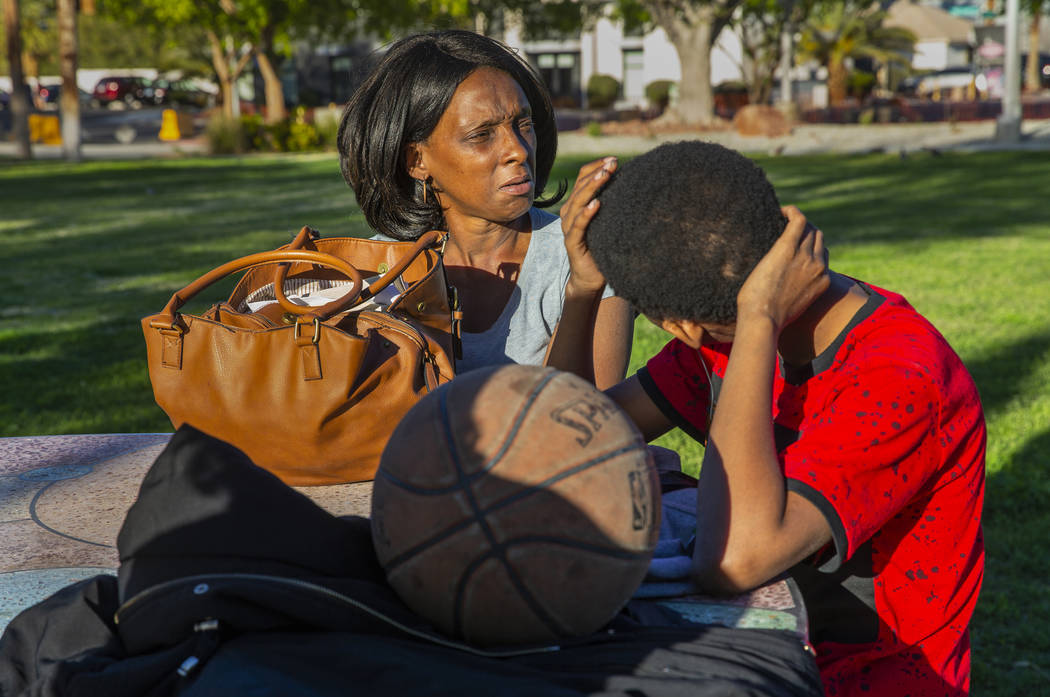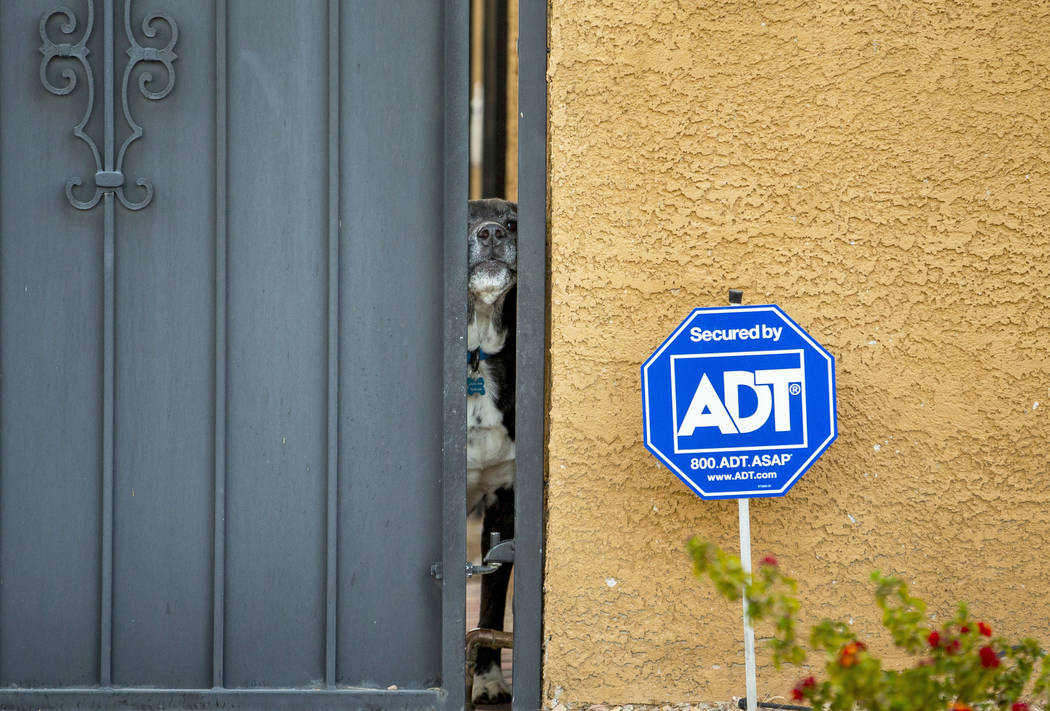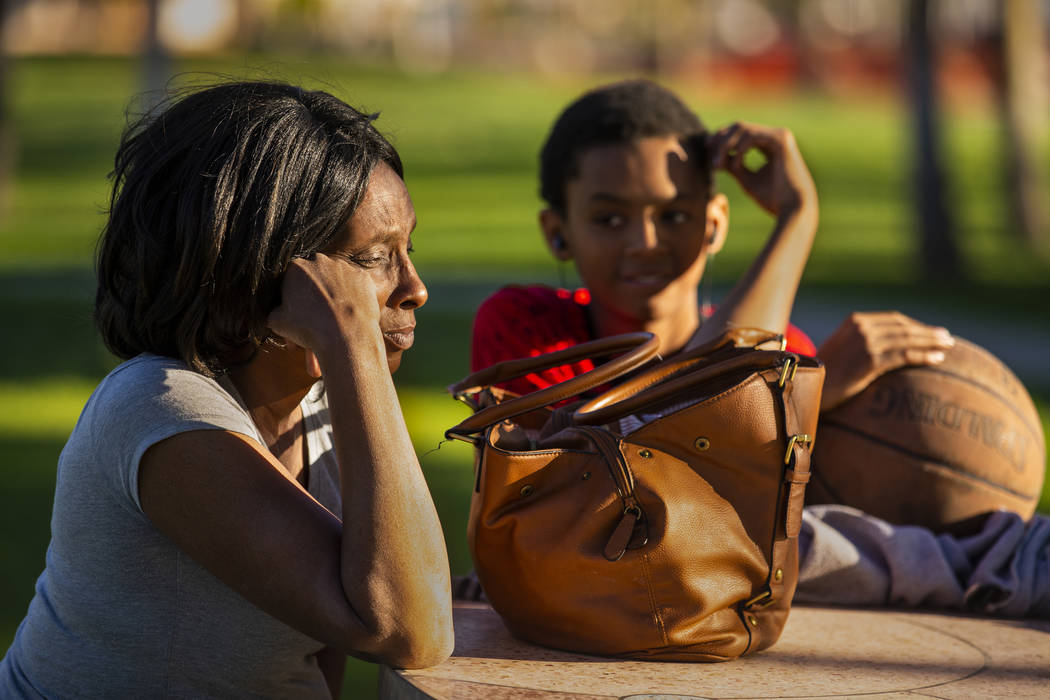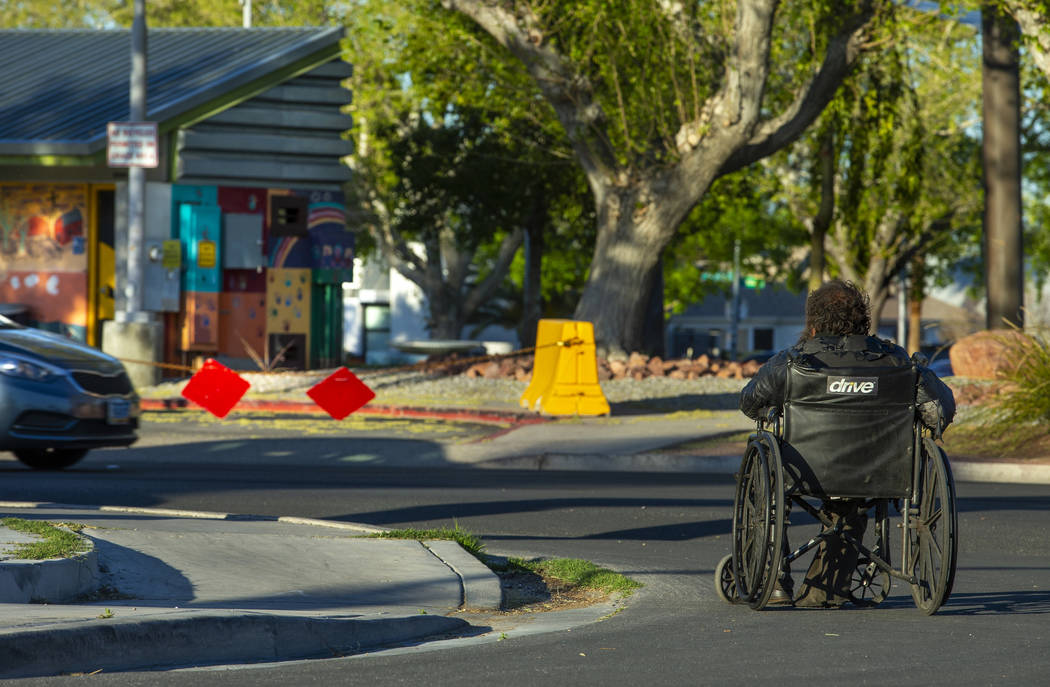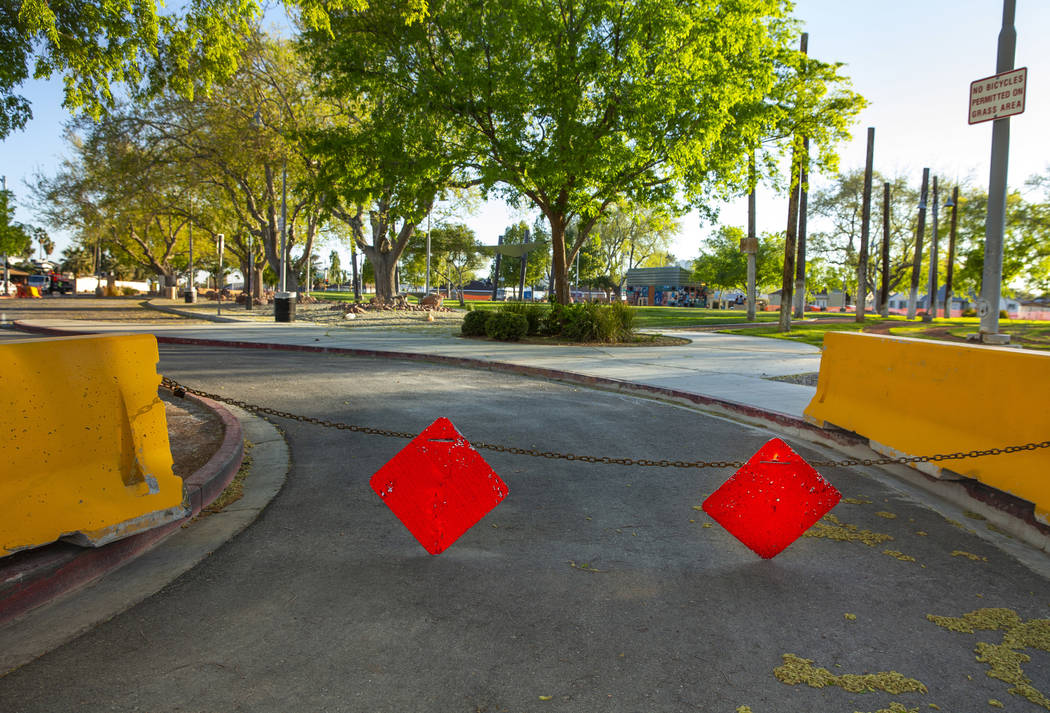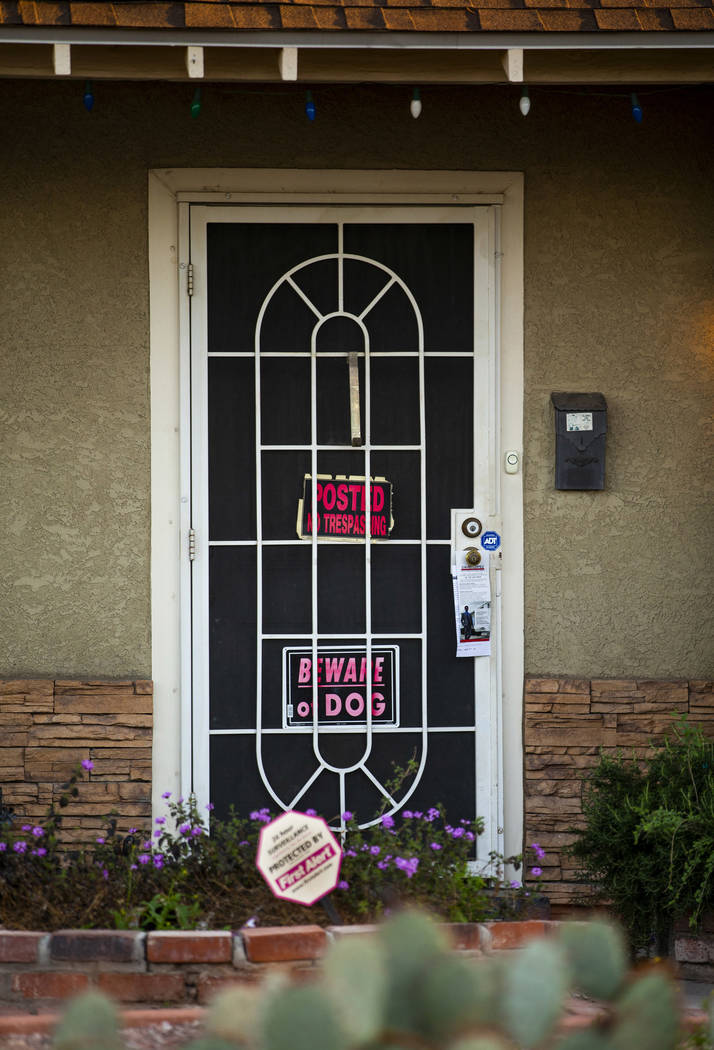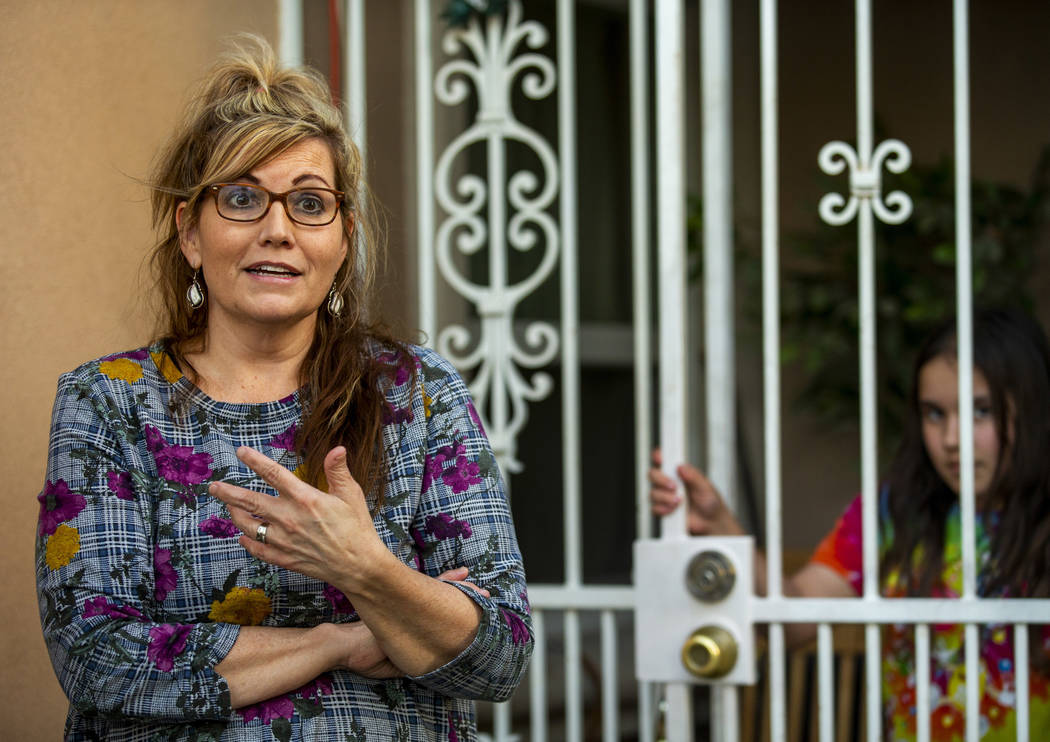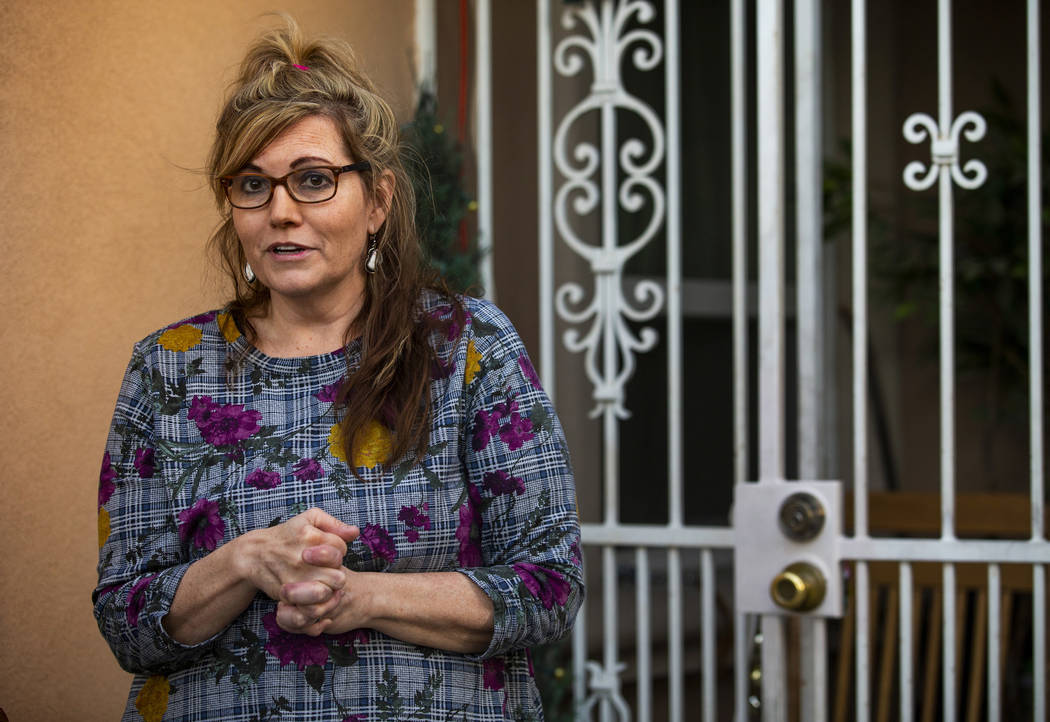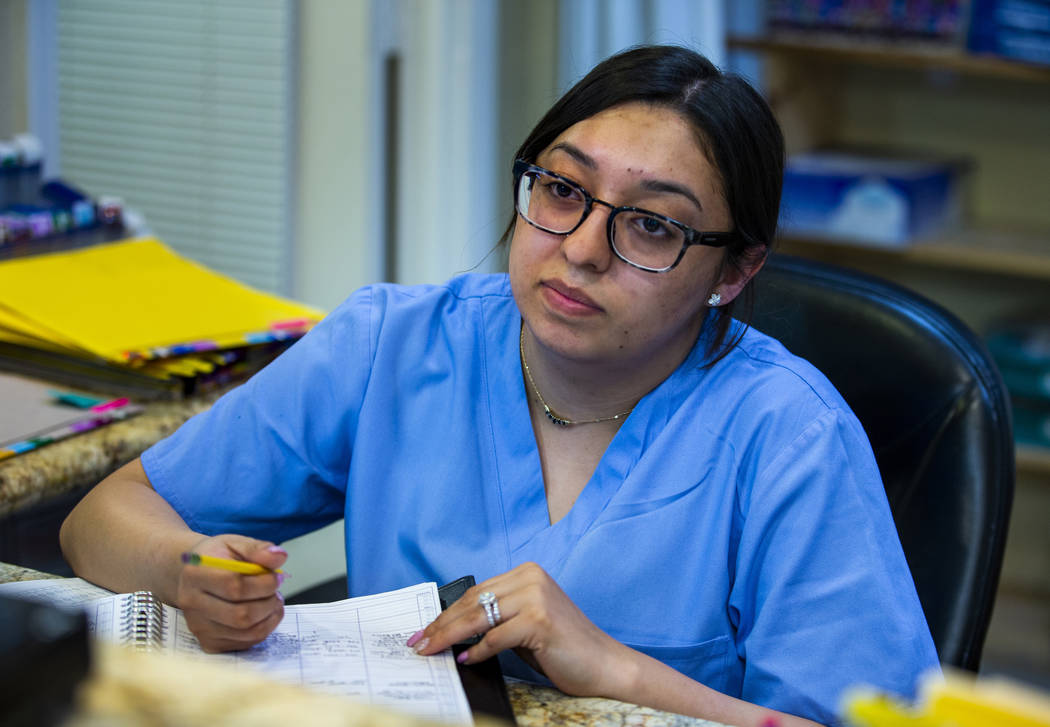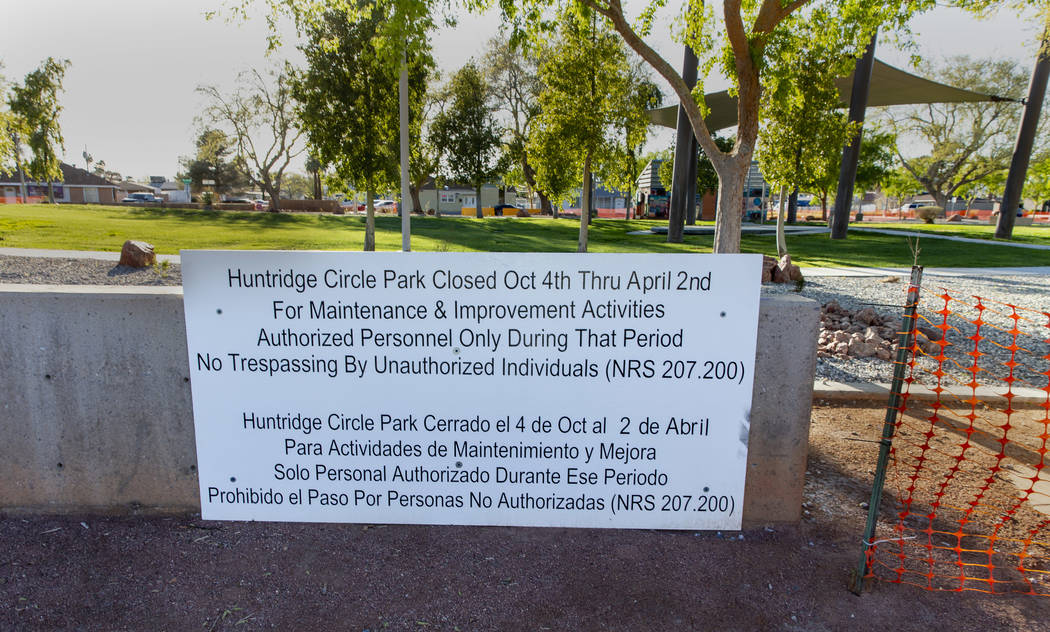Las Vegas neighbors fear Huntridge park’s troubled past
The houses around the Huntridge neighborhood off Maryland Parkway speak for themselves through foreboding “No Trespassing” signs, barking dogs behind 6-foot walls and gates, barred windows and doors and signs advertising that homes are protected by electronic security services.
Property crime has been a problem in the downtown Las Vegas neighborhood since at least at least 2006, a concern that many neighbors blame on nearby Huntridge Circle Park, off Maryland Parkway and Charleston Boulevard, and the many homeless people who congregated there before its closure in October for renovation.
The park was slated to reopen Tuesday, but local developer J. Dapper proposed further private development early this month, and the City Council approved the plan at its meeting on March 20, putting the reopening on hold.
The new design includes plans for replacement of equipment at the children’s park and the addition of a garden and an interactive art exhibit with sculptures by local artists.
The new time frame for reopening of the park is undetermined, but Dapper predicts that his project will take about six months.
In the meantime, residents and city officials continue to express concerns over what City Councilman Bob Coffin calls the park’s “star-crossed path.”
The park, which has been open for more than a half-century, was closed the first time in 2006 after a homeless man was stabbed to death in a brawl there.
It finally reopened in 2013, and residents say it quickly returned to being a popular hangout for the homeless, drug users and petty thieves.
Then in July 2018, an 80-year-old woman was brutally assaulted and shot in her home a block away. Residents say the suspect was a regular at the park.
Residents say they recognize that the homeless need open spaces as much as they do, but they can’t countenance danger coming to their neighborhood.
Not ‘homeless haters’
“We don’t want to be known as homeless haters. That’s not the case,” said Kathleen Kahr D’Esposito, president of the Huntridge Neighborhood Association, who has lived in the neighborhood for 30 years. “We want to be known as problem solvers. That’s all anyone’s trying to do here.”
Though the park remains closed, it’s not always empty.
On a recent Wednesday afternoon, 55-year-old Reponzia Catron and her 16-year-old son, Marion, sat at table in the park.
Despite signage and an orange tarp, the Catrons said they were unaware the park is closed. Reponzia Catron said they had been sleeping at the downtown bus stop after what they expected to be a short stay in Las Vegas but discovered the park and thought it looked inviting.
“People come here, sleep on the concrete with a blanket and hope nobody don’t see them,” she said. “But we’re all God’s children. We can’t make them feel not human. … The neighbors have homes to go to; the only place here is outside.”
But Coffin, who lives in the neighborhood and represents that district, said the city has used significant resources to create its Courtyard Homeless Resource Center on Foremaster Lane, which provides 24/7 security, social services and outdoor sleeping areas with mats. The homeless need to take advantage of that resource rather than moving into city parks, he said.
He suggested that his fellow council members are ready to take a hard line to prevent the park from becoming a hangout for the down and out.
“The city is leaning toward calling homelessness a public safety problem,” he said.
The city tried a different tactic in 2006, passing an ordinance banning the feeding of homeless people in city parks. But the ACLU of Nevada sued, and a federal judge eventually agreed that the law was unconstitutional.
Coffin, who grew up in the area and remembers playing in the park as a boy, said those who feed people in the parks encourage the homeless not to seek services elsewhere. And some then look for other places to stay nearby, sometimes squatting in homes or trespassing in people’s front or backyards.
“We’re trying to be nice, trying to play nice,” he said. “But we’ve got to think of the neighbors.”
City’s work continues
The $80,000 renovation that the city planned when the park was closed in October remains a work in progress. Decorative chip rock has been placed in many areas of the park, replacing inviting grassy areas.
The next stages of renovation will include new concrete work around the park as well as decorative fencing and gates around a children’s area, new signage and foliage.
Dapper envisions his plan, which also includes an indoor art exhibit at the old Save-A-Lot in the Huntridge Shopping Center, being the answer to the community’s problems.
He’s already donated $25,000 and is raising donations for public and private partnerships for various features. He’s also looking at other cities that have pulled off similar projects.
The children’s area alone will cost about $200,000 to upgrade, and the overall project could run as high as $750,000, he estimates.
Like Coffin, he said steps will have to be taken to prevent the park from again becoming a haven for the homeless.
“The park is going to have to be controlled. We’re going to have to put a barrier around to protect this stuff,” he said.
However, he doesn’t see the park’s past as a deterrent.
“All of those issues and problems, they really just go away when you change the use of the park,” he said.
But some nearby businesses say shutting the park merely moved the problem onto nearby streets.
Diana Villasenor, the receptionist at Alpha Smile Dental Care, said she and other workers have seen needles and feces on the property since the closure.
And she predicted the reverse will happen when it reopens, no matter what precautions the city and developers take.
‘Won’t be any different’
“It’s trouble; everybody knows it’s hobo park,” she said. “It won’t be any different.”
Kahr D’Esposito, the president of the neighborhood association, said she is taking a wait-and-see approach, but is hopeful that Dapper’s plan is the answer. She said the private partnership will bring more restrictions to those who can enter and more staff to handle complications that arise.
Over the years, she has seen lines of shopping carts on the sidewalk, overflowing trash cans, discarded clothing and human waste. On occasion, she has found vagrants sitting in her carport with cellphones plugged into an outdoor outlet of her home.
“If I were a mom with two little kids, I wouldn’t want to see that,” she said. “There’s a lot of nostalgia with regards to that park. It’s time for a big change.”
For Kahr D’Esposito, the issue is about providing resources to the homeless, which they can’t get when they are miles away from social services.
“It’s inhumane if we keep the homeless in a little neighborhood park and don’t get them to services,” she said.
Outside the dentist’s office on Wednesday, a man with a tattered leather jacket sat in a wheelchair nearby, his face smudged with dirt from living in the elements. Another, further down the road, flashed a cardboard sign to cars passing by. “Anything Helps,” it read.
On Wednesday, Sheila Acevedo watched her 10-year-old daughter play on a side street by the park. She said that when it was open, she often wanted to bring her to the park but didn’t feel safe doing so without her husband.
“It’s supposed to be a community park, and it’s not utilized as one,” she said. “I have a heart, too, but it becomes a feeding ground for homeless people.”
She shrugged and posed a question that many others have asked.
“What’s the solution?”
Contact Briana Erickson at berickson@reviewjournal.com or 702-387-5244. Follow @brianarerick on Twitter.



